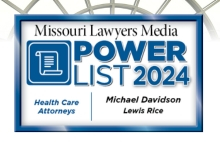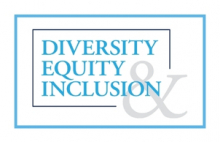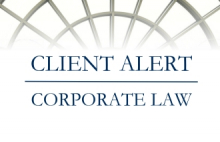FTC Releases Final Updates to Endorsement Guides
July 7, 2023On June 29, 2023, the Federal Trade Commission (“FTC”) released its final version of its revised Guides Concerning the Use of Endorsements and Testimonials in Advertising (the “Revised Endorsement Guides”). The Revised Endorsement Guides closely resemble the revisions the FTC proposed in May 2022 (which we previously summarized here) with some minor modifications. Below is a brief overview of a few notable final changes:
1. Articulating a new principle regarding not procuring, suppressing, organizing, editing, publishing, upvoting, downvoting, or reporting consumer reviews in ways that likely distort what consumers really think of a product.
In the May 2022 proposed revisions, the FTC proposed adding a new section to the Endorsement Guides prohibiting advertisers from procuring, suppressing, boosting, organizing, or editing consumer reviews of their products or services in a way that distorts or otherwise misrepresents what consumers think of their products (e.g., deleting or suppressing unfavorable reviews, bribing consumers in exchange for positive reviews, falsely flagging negative reviews as “fake” on third-party platforms without substantiation). The Revised Endorsement Guides adds the new section and expands it to include publishing, upvoting, downvoting, and reporting (upvoting or downvoting a review is casting a vote in support of or in disapproval of it by clicking on an arrow or other icon, usually affecting the review’s rank or position on a website or platform). Brands are permitted to edit abusive, unlawful, vulgar, obscene, harassing, or sexually explicit consumer reviews as long as the brand uniformly applies such editing criteria to all reviews (positive and negative).
2. Addressing incentivized reviews, reviews by employees, and fake negative reviews by competitors.
The Revised Endorsement Guides provide that any review that fails to clearly and conspicuously disclose incentives provided to that reviewer or the reviewer’s employment relationship with the manufacturer may be deceptive, consistent with the language FTC proposed in May 2022. The Revised Endorsement Guides clarify that an incentivized negative statement about a competitor’s service is not an “endorsement” under the Endorsement Guides, but that such a statement (e.g., a paid negative review of a competing product) can be deceptive in violation of Section 5 of the FTC Act.
3. Adding a definition of “clear and conspicuous” and warning that a platform’s built-in disclosure tool might not be adequate.
The Revised Endorsement Guides adopt the definition of “clear and conspicuous” that the FTC proposed in May 2022. “Clear and conspicuous” means a disclosure is difficult to miss (i.e., easily noticeable) and easily understandable by ordinary consumers. For example, if the endorsement is visible without having to click on the link labeled “more,” but the disclosure is not visible without doing so, then the disclosure is not difficult to miss and thus is not clear and conspicuous. A platform’s built-in disclosure tool may not be sufficient if such a disclosure is easy to miss and thus not clear and conspicuous.
4. Updating the definition of “endorsement” to clarify that it can include social media tags and fake reviews.
The Revised Endorsement Guides largely adopt the broadened definition of “endorsement” FTC proposed in May 2022. An “endorsement” is generally any advertising, marketing, or promotional message for a product that consumers are likely to believe reflects the opinion or experience of a party other than the sponsoring brand. The FTC noted in the Revised Endorsement Guides that fake positive reviews are endorsements and clarified that tags in social media posts may constitute endorsements. For example, if a golfer is “hired” to post to social media a video of the golfer driving a particular brand of golf ball, the paid post is an endorsement if viewers can readily identify the golf ball brand, either because it is apparent from the video or because it is tagged or otherwise mentioned in the post.
5. Providing a clearer explanation of the potential liability that advertisers, endorsers, and intermediaries face for violating the law.
Advertiser Liability: Advertisers are subject to liability for misleading or unsubstantiated statements made through endorsements and for failing to disclose unexpected material connections between themselves and their endorsers. An advertiser may be liable for a deceptive endorsement even when the endorser is not liable. The FTC recommends in the Revised Endorsement Guides that advertisers provide guidance to their endorsers, monitor compliance, and take action to remedy non-compliance. This approach, the FTC now notes, is not a safe harbor, but should reduce the incidence of deceptive claims and reduce an advertiser’s odds of facing an FTC enforcement action.
Endorser Liability: Endorsers can be liable for statements made in the course of their endorsements, such as when an endorser (e.g., an influencer) makes a representation that the endorser knows or should know to be deceptive, including when an endorser falsely represents that they personally used a product. Endorsers may be liable where an endorsement goes beyond the endorser’s personal experience or where an endorser fails to disclose unexpected material connections with a brand.
Intermediary Liability: Intermediaries (such as advertising agencies and public relations firms) may be liable for their roles in creating or disseminating endorsements containing representations that they know or should have known are deceptive. They may also be liable for their roles with respect to endorsements that fail to disclose unexpected material connections.
6. Emphasizing special concerns with child-directed advertising.
The new section of the Revised Endorsement Guides on child-directed advertising remains unchanged from the language FTC proposed in May 2022: “(e)ndorsements in advertisements addressed to children may be of special concern because of the character of the audience” and “(p)recites that would not ordinarily be questioned in advertisements addressed to adults might be questioned in such cases.” The FTC notes in its commentary that this section is intended to provide a general principle without specific requirements and that it is exploring next steps regarding child-directed advertising, including endorsement directed to children.
Updated FAQs
The FTC also updated its Endorsement Guides FAQ guidance “FTC’s Endorsement Guides: What People Are Asking”. In the updated FAQs, the FTC revised and expanded the publication to answer 40 more frequently asked questions, with a particular focus on influencers, the required disclosure of material connections across different platforms, and issues related to reviews.
If you have any questions regarding the impact of the FTC’s Revised Endorsement Guides or other applicable advertising laws, please contact one of our Advertising, Promotions & Social Media attorneys.
Special thanks to Jared A. Gillen for his contributions to this article.








